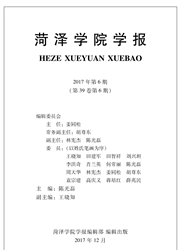

 中文摘要:
中文摘要:
Objective:To study and establish the preliminary linear and modified models for the interface shear mechanics performance between implant and bone cement and to explore its damage significantce.Method:The loosening research between artificial hip joint prosthesis stem and bone cement interface performance can be evaluated by the push-in test.Based on the debondittg perforntance test,the analytical expressions of the average load and displacement from the debottdiftg failure and splitting failure process were deduced and determined.The correlations of the expressions of the average load-displacement and statistical experimental data were analyzed.Results:It demonstrated that the interface debonding failure mechanical model could be characterisied as interface bond strength mechanical performance.Based on analysis of models and experimental data by the three statistical analysis methods,the results indicated the modified model could be better represented by the interfacial debonding strength properties.The bond stress(?)and relative sliding s distribution along the embedment regional were coupling affected by both pressure arch effect and shear lag effect in bone cement.Two stress peaks of implant have been found at the distance from 0.175L0 loading tip to 0.325L0 free tip,which also verified the early loosening clinical reports for the proximal and latter region.As the bone cement arch effect,the bond stress peak tend to move to the free tip when the debonding failure would be changed into the splitting failure,which presents a preliminary study on the mechanism of early delmnding failure for the stem-cement interface.Conclusions:Functional models of the stembone cement interfacial debonding failure are developed lo analyze the relevant mechanism.The different lotcational titanium alloy stress,and the interfacial bond stress and the relative slides are evaluated to acquire a guide of the different positions of interfacial damage.The coupling;effect which is original from the pressure arc
 英文摘要:
英文摘要:
Objective:To study and establish the preliminary linear and modified models for the interface shear mechanics performance between implant and bone cement and to explore its damage significantce.Method:The loosening research between artificial hip joint prosthesis stem and bone cement interface performance can be evaluated by the push-in test.Based on the debondittg perforntance test,the analytical expressions of the average load and displacement from the debottdiftg failure and splitting failure process were deduced and determined.The correlations of the expressions of the average load-displacement and statistical experimental data were analyzed.Results:It demonstrated that the interface debonding failure mechanical model could be characterisied as interface bond strength mechanical performance.Based on analysis of models and experimental data by the three statistical analysis methods,the results indicated the modified model could be better represented by the interfacial debonding strength properties.The bond stress(?)and relative sliding s distribution along the embedment regional were coupling affected by both pressure arch effect and shear lag effect in bone cement.Two stress peaks of implant have been found at the distance from 0.175L0 loading tip to 0.325L0 free tip,which also verified the early loosening clinical reports for the proximal and latter region.As the bone cement arch effect,the bond stress peak tend to move to the free tip when the debonding failure would be changed into the splitting failure,which presents a preliminary study on the mechanism of early delmnding failure for the stem-cement interface.Conclusions:Functional models of the stembone cement interfacial debonding failure are developed lo analyze the relevant mechanism.The different lotcational titanium alloy stress,and the interfacial bond stress and the relative slides are evaluated to acquire a guide of the different positions of interfacial damage.The coupling;effect which is original from the pressure arch and the interfacial s
 同期刊论文项目
同期刊论文项目
 同项目期刊论文
同项目期刊论文
 The optimization design research of Sliding boots materials with plasma cladding Cr4MnTi of the shea
The optimization design research of Sliding boots materials with plasma cladding Cr4MnTi of the shea Relation between Three-dimensional Knee Kinematics during Walking and Squatting for Healthy Young an
Relation between Three-dimensional Knee Kinematics during Walking and Squatting for Healthy Young an Fabrication of lotus-leaf-like superhydrophobic Surfaces via Ni-based nano-composite electro-brush p
Fabrication of lotus-leaf-like superhydrophobic Surfaces via Ni-based nano-composite electro-brush p 期刊信息
期刊信息
